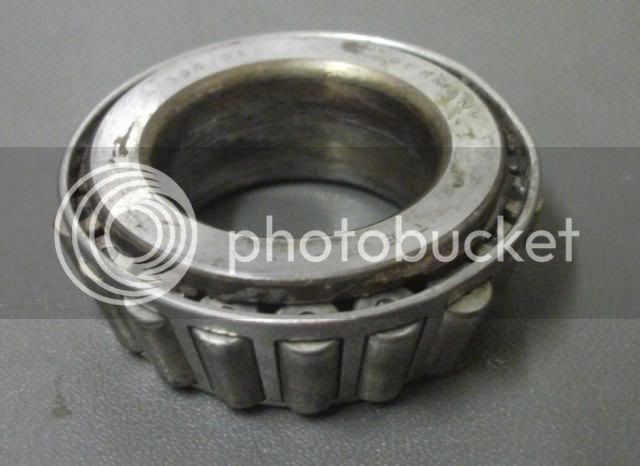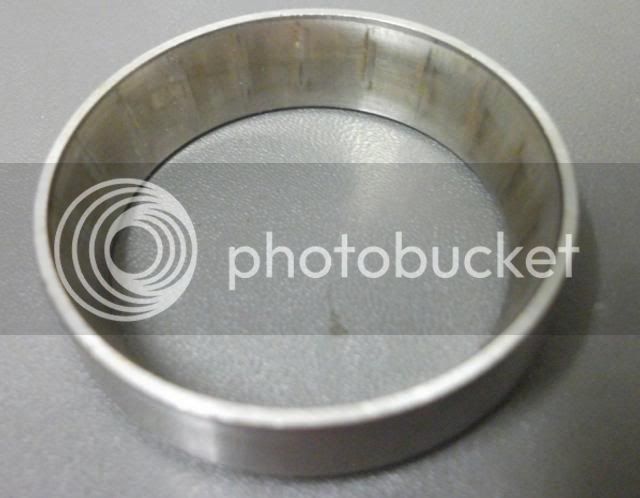Tweetie
Race Dog
- Joined
- Oct 30, 2008
- Messages
- 2,106
- Reaction score
- 0
- Location
- Centurion - South Africa
- Bike
- BMW R1200GS
This report is for the NON technical guys and most girls who hear about these things but don’t actually see them or fully understand what is meant, when the “manne” or mechanics, talk.
I had to replace my daughters 650 Dakar neck bearings. So having done the job, I realised I should make this post for the "less informed", bike owners, to show the actually animals we are discussing, and that give rise to their failure and required replacement.
In the world of bearings , there are basically Ball bearings and Roller bearings. In the these cases, the Ball bearing, has "balls" that rotate and run around in the bearing, and in Roller bearings they are “rollers”. These rollers can go down in size to what is called "needle" bearings , which are just thin "rollers", and used in many applications.
Let’s understand why these bearings fail in the first place.
Firstly we have to identify the various parts of these Taper Roller Bearing, very common on bikes and most motor vehicle wheels etc.
A) Bearing housing
B) Roller Cage
C) Rollers
D) Cup
E) Lubrication
The area’s which the rollers run against are called the “race ways”
Normally, bearings rotate full 360 Degrees (round and round they go) but in the case of bike neck bearings they remain relatively stationary when riding and only slight rotation when the handle bars are rotated through 50 or 60 degree angles at most. In this case, because the rollers remain more or less in the same position most of their lives, and especially with DS bikes where riding on uneven surfaces gives rise to “knocks” in a linear direction from the wheel to neck area, these bearing “Rollers”, impact the same position on their raceway’s, they eventually bang a knotch into the raceways.
This gives rise to the terrible sensation of riding along with the bike but slight steering is difficult to weave from side to side. Especially pronounced at low speeds, for when lane splitting between cars , whilst moving up to the front of the row of vehicles at a traffic light or so.
As this notching gets worse, it basically becomes very difficult to properly steer the bike at all speeds and can be very frustrating, eventually leading to a dangerous situation. Cornering becomes very dangerous.
The following 2 pictures show the bearings parts. Notice the rollers, inside the roller cage is clearing visible on the one half of the bearing.

This pic is of the Cup, and outer race way. This is a very good example for a notched bearing raceway. One can clearly see the indentations that the rollers made on the raceway.

These indentations can actually be felt with the nail of one’s finger. Normally these raceways are like a mirror and extremely smooth. This is an excellent example of a failed neck bearing.
Should this bearing be placed in a wheel or so, it would “rumble” and self-destruct very quickly.
I do trust this post is helpful to the non-technical people as intended.
;D
I had to replace my daughters 650 Dakar neck bearings. So having done the job, I realised I should make this post for the "less informed", bike owners, to show the actually animals we are discussing, and that give rise to their failure and required replacement.
In the world of bearings , there are basically Ball bearings and Roller bearings. In the these cases, the Ball bearing, has "balls" that rotate and run around in the bearing, and in Roller bearings they are “rollers”. These rollers can go down in size to what is called "needle" bearings , which are just thin "rollers", and used in many applications.
Let’s understand why these bearings fail in the first place.
Firstly we have to identify the various parts of these Taper Roller Bearing, very common on bikes and most motor vehicle wheels etc.
A) Bearing housing
B) Roller Cage
C) Rollers
D) Cup
E) Lubrication
The area’s which the rollers run against are called the “race ways”
Normally, bearings rotate full 360 Degrees (round and round they go) but in the case of bike neck bearings they remain relatively stationary when riding and only slight rotation when the handle bars are rotated through 50 or 60 degree angles at most. In this case, because the rollers remain more or less in the same position most of their lives, and especially with DS bikes where riding on uneven surfaces gives rise to “knocks” in a linear direction from the wheel to neck area, these bearing “Rollers”, impact the same position on their raceway’s, they eventually bang a knotch into the raceways.
This gives rise to the terrible sensation of riding along with the bike but slight steering is difficult to weave from side to side. Especially pronounced at low speeds, for when lane splitting between cars , whilst moving up to the front of the row of vehicles at a traffic light or so.
As this notching gets worse, it basically becomes very difficult to properly steer the bike at all speeds and can be very frustrating, eventually leading to a dangerous situation. Cornering becomes very dangerous.
The following 2 pictures show the bearings parts. Notice the rollers, inside the roller cage is clearing visible on the one half of the bearing.

This pic is of the Cup, and outer race way. This is a very good example for a notched bearing raceway. One can clearly see the indentations that the rollers made on the raceway.

These indentations can actually be felt with the nail of one’s finger. Normally these raceways are like a mirror and extremely smooth. This is an excellent example of a failed neck bearing.
Should this bearing be placed in a wheel or so, it would “rumble” and self-destruct very quickly.
I do trust this post is helpful to the non-technical people as intended.
;D




